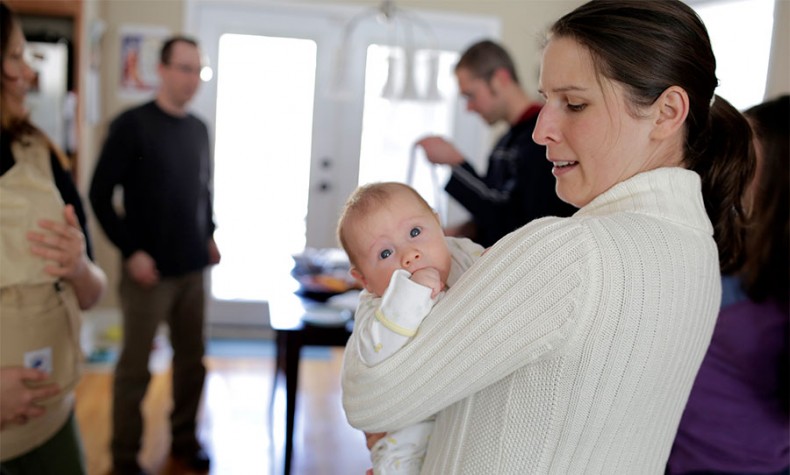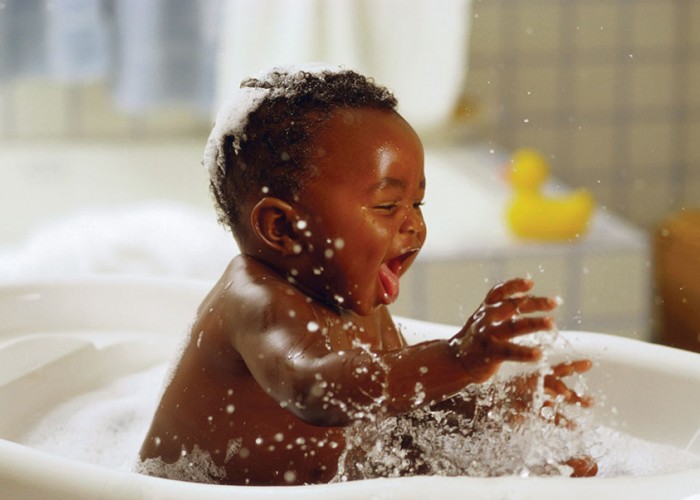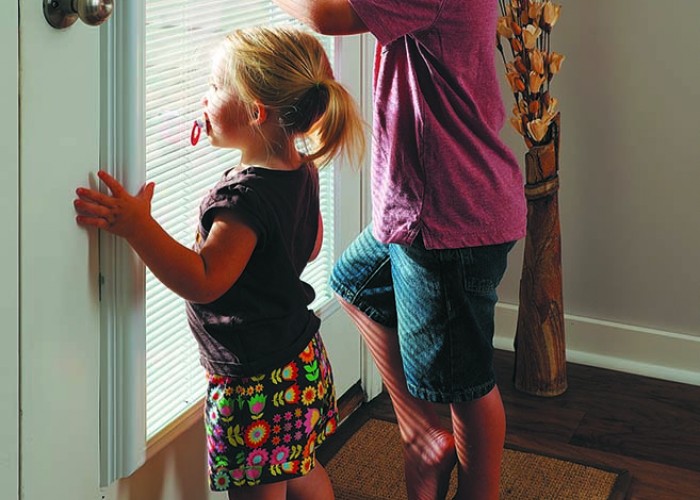Saving Energy After a New Baby
Ways to save amid the diaper changes and late-night feedings
By Hannah McKenzie
The author with her family’s newest addition.
Q: My energy bill noticeably rose when I brought my first baby home, and our second is arriving soon. How can we limit the expected increase?
A: Higher energy bills after a baby can be quite a shock. How can someone so small need so much? Fortunately, there are a number of ways to save, so find what works best for your family.
Laundry (with icky stains) is a persistent chore for families with children. Clothes washers with the Energy Star® label use approximately 10 gallons of water less per load than standard washers, and they produce equally clean laundry. A growing family is a great reason to upgrade to an energy-efficient washer and dryer.
Keep laundry costs down by:
- Washing and drying full loads, and taking care to not under- or over-fill the machine. This may mean mixing your clothes or linens with your baby’s.
- Using cold water when possible, warm water for diaper leaks and hot water for epic adventures like lice. “Prewash” or “stain” cycles are more likely to remove stains than hot water.
- When drying clothes, use the Energy Star or dry-sensing setting rather than timed-dry to limit cooking your already dry clothes. Empty the lint trap. If you have time, hang clothes outside to dry and whiten in the sunshine.
Gadgets like swings, baby monitors and sound machines can add up fast. Turn off, unplug or avoid electric devices when possible, and consider rechargeable batteries like Panasonic’s eneloop to limit the need to repeatedly purchase batteries.
Lights are often on as we care for newborns at all hours or scare away under-the-bed monsters. Add LED light bulbs to your baby registry and change ALL of the bulbs in your house, including night lights. LEDs last 10+ years and are less likely to shatter than incandescent bulbs or CFLs, which release dangerous chemicals when broken. Energy Star-labeled LEDs meet stringent quality standards for their light quality and life spans. Changing bulbs will immediately and noticeably save energy.
Clothing that is appropriate for the temperature inside can keep heating and cooling costs down. Layered clothing, hats and socks are a few items that help babies stay warm while leaving your heat at 68 degrees or below.
Toddler proofing — covering outlets, hiding cords and moving electronics out of reach — is also a great time to limit the electric devices at home. As children grow, many prefer time with their family over electronics by opting for board games, reading together or playing outside. The same goes for the baby who loves being held and rocked when sleeping. You’ll save energy and spend time with your child who will be too big for snuggles in a matter of years.
Breastfeeding and cloth diapers offer savings but are personal choices that present obvious challenges. Breastfeeding limits the energy needed for washing, refrigerating and warming bottles when mom is home, but is more likely to save noticeably elsewhere in your budget. Cloth diapers, while marginally increasing energy and water bills, can limit the energy needed to manufacture, transport and dispose of single-use diapers.
Making space for a growing family in an existing home rather than moving to a larger home might also keep energy costs low.
Bringing home a tiny human comes with all sorts of changes, including a need for more electricity, but you can keep that impact to a minimum.
-
Bringing home baby
-
Share this story:





